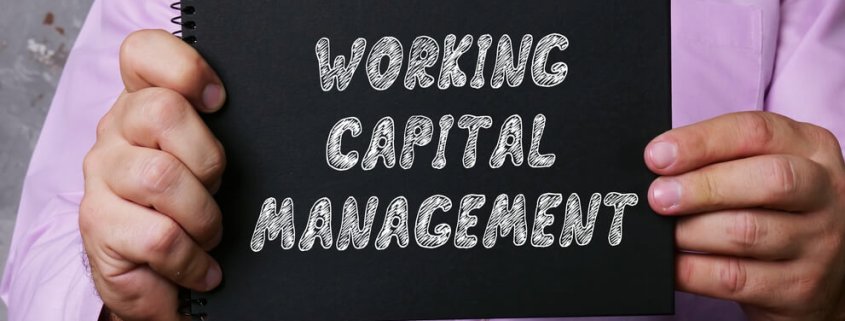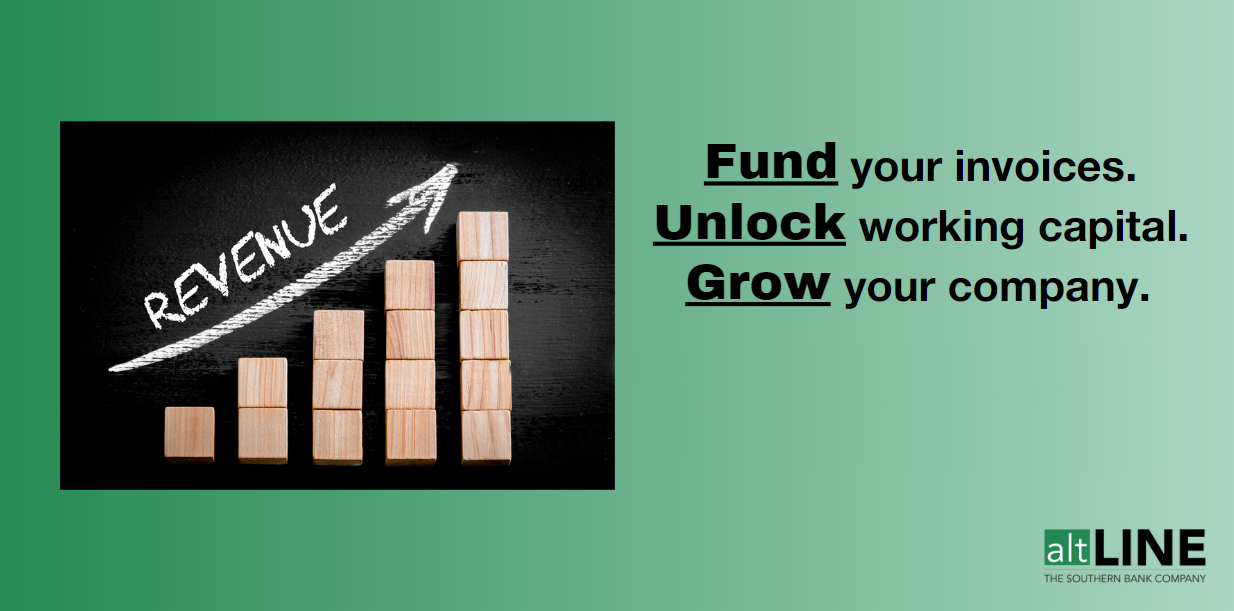What Is the Working Capital Cycle?
Last Updated January 30, 2024
Inventory, accounts receivable (AR), and accounts payable (AP) should be familiar terms for business owners. Where it gets tricky is figuring out how to tie these three components together.
Fortunately, there’s a concept that encompasses all three: the working capital cycle.
Evaluating your working capital cycle is a must if you’re aiming to manage your working capital effectively. It paints a picture of your financial situation that can help identify and address areas for improvement for both the present and the future. Before walking through how to calculate your working capital cycle, let’s first discuss what the working cycle is and what it reveals about your business’s efficiency.
What Is the Working Capital Cycle?
The working capital cycle, also known as the cash conversion cycle, is a measurement of how long it takes to convert your current assets into cash.
The working capital cycle is expressed as a figure, signifying the number of days it takes to convert your current assets into cash. Therefore, businesses should aim to reduce their working capital cycle, as lowering your figure (or lessening the number of days) signals you are boosting efficiency.
Working Capital Cycle Formula
Here’s how the working capital cycle looks written out in a simple formula:
Working Capital Cycle = Inventory Cycle + Accounts Receivable Cycle – Accounts Payable Cycle
or:
Working Capital Cycle = DSI (Days Sales in Inventory) + DSO (Days Sales Outstanding) – DPO (Days Payables Outstanding)
Let’s take a closer look at the first formula:
Inventory cycle is how long it takes to turn inventory into sales from start to finish.
Accounts receivable cycle is the average number of days it takes to collect payment from when you provided goods or services.
Accounts payable cycle is the average number of days it takes to submit payment to your suppliers from when you received goods or services.
Now, if you don’t know how to calculate your inventory cycle, AR cycle, and AP cycle, this could become confusing, so let’s quickly run through how to calculate each of those values:
Inventory Cycle = (Average Inventory / Cost of Goods Sold) x 365
AR Cycle = (AR / Total Credit Sales) x 365*
AP Cycle = (AP / Cost of Goods Sold) x 365
*Total credit sales refers to the revenue from sales of products or goods.
Example of Calculating the Working Capital Cycle
The owner of Chop Wood Paper Company is looking to calculate her working capital cycle for the fiscal year.
Prior to doing so, she calculates the following relevant figures:
- Average Inventory = $250,000
- Cost of Goods Sold = $1,000,000
- Accounts Receivable = $50,000
- Total Credit Sales = $500,000
- Accounts Payable = $250,000
Her inventory cycle is 91.25 days (($250,000/1,000,000) x 365).
Her AR cycle is 36.5 days (($50,000/$500,000) x 365).
Her AP cycle is 18.25 days (($250,000/$1,000,000) x 365).
With these three figures, she can easily determine her working capital cycle:
91.25 days + 36.5 days – 91.25 days = 36.5
This means she is out of pocket for an average of 36.5 days before receiving full payment for her services. You can see why lowering this number is critical. For small business owners especially, going weeks without being paid can have damaging effects.
Related: How to Get Invoices Paid Faster
Analyzing the Working Capital Cycle
Now that you know how to calculate the working capital cycle, it’s equally important to understand how to analyze your resulting figure. What’s a “good” working capital cycle? Let’s discuss.
Positive Working Capital Cycle
A positive working capital cycle is typical, though it means your business is usually operating out-of-pocket for a certain period of time while you’re awaiting customer payment.
It’s pivotal to be consistent by measuring your cycle every period, whether it be each quarter, biannually, or annually. That way, you can recognize dips or jumps and, in the case of the latter, take action quickly. You don’t want your working capital cycle to be too high, as that means you’re spending a lot of time awaiting payment.
For example, if your working capital cycle in 2021 was 22.5 days and your working capital cycle in 2022 was 35.25 days, you might want to look into ways to accelerate payment cycles or improve inventory, so you don’t end up suffering from cash flow problems.
Negative Working Capital Cycle
So, what if your calculation results in a negative number?
It’s not necessarily a bad thing; a negative working capital cycle denotes that a business is paid by their customers before they have to pay their suppliers. This is common in a few industries, the most obvious of which are retail and restaurant businesses. These businesses’ customers pay immediately, which leads to a negative working capital cycle being the norm.
A negative working capital cycle can be seen as a good thing or a bad thing. On one hand, getting paid quickly is great! It usually prevents companies from dealing with cash flow problems that could otherwise put a strain on their businesses. On the other hand, relying on customer prepayment or immediate payment to stay financially afloat can be risky unless you’re in the retail or restaurant business. Plus, there’s a stigma among investors that businesses with negative cash flow may have a lower quality of earnings or that it’s unsustainable in the long run.
No small business owner is immune from facing significant financial obstacles, so there’s no need for immediate panic if your cycle isn’t where you’d like it to be. If aspects of your business aren’t moving as planned, it simply requires knowing what’s holding your business back and taking the necessary course of action to find solutions. One way to do so is by knowing what causes changes in working capital. It all starts with doing your homework.
With that being said, let’s talk about improving your working capital cycle.
How to Increase Your Working Capital
The efficiency of your company’s accounting processes plays a major role in determining your working capital cycle. Furthermore, while it comes as no surprise, you can improve your working capital cycle by increasing working capital.
Here are a few strategies to explore that can tie both loose ends at once, streamlining your accounting processes and increasing your working capital.
1. Optimize Invoicing Processes
Late payments are a common reason businesses struggle with insufficient working capital. There are many ways to bolster your invoicing processes and ensure customers are paying swiftly. We’ll discuss a couple of our favorite options in a bit, but here are a few general strategies:
Try to shorten payment terms: For example, negotiate the possibility of shifting from net 30 to net 15 with your customer. Doing so can put cash in your pocket two times faster.
Offer early payment discounts: Early payment discounts encourage customers to pay as soon as they can, as it gives them a slight discount on your goods or services.
Perform credit checks on customers: It might seem tedious, but performing credit checks ensures you aren’t taking on high-risk customers. Otherwise, you might end up doing business with unreliable payors.
Implement late payment fees: It’s important you put late payment fees in writing when you’re drafting a contract with a potential customer. You should also know how to draft a polite email requesting payment.
2. Use Accounting Software to Accelerate AR and AP Processes
Accounting software is a lifesaver for many business owners. It reduces manual labor, eliminates the possibility of human accounting errors (which can prove costly), and automates otherwise time-consuming tasks.
Related: Best Accounting Software for Small Businesses
3. Try Invoice Factoring
You can file invoice factoring under “optimizing invoicing processes,” but since some business owners might be unaware of how this alternative financing method works, it’s worthy of a more in-depth explanation.
Invoice factoring involves selling your unpaid invoices to a third-party factoring company in exchange for a cash advance. For example, if you have a notoriously slow-paying customer working on long payment terms, you don’t have to wait 30 to 60 days to see that cash hit your bank account. Instead, you can sell the invoice to a factor immediately and receive an advance of 80 to 90% of the value of that invoice within 24 hours. Once your customer is ready to pay, they pay it to the factor rather than your business. Once the factor receives and processes payment, the remaining 10 to 20% of the cash is released to your business, minus a small factoring fee.
You can even factor your entire ledger if you’d like. Many business owners choose to do so, as it takes plenty of accounting-related responsibilities off their plates.
4. Improve Inventory Management
Considering the inventory cycle involves your average inventory, you may want to look into ways to increase inventory. You don’t want to find your business short on inventory, so it’s best to look at some inventory management practices.
A few tips include prioritizing which items you’re low on before you run out, choosing a good supplier to work with (one that won’t be late on deliveries), and accounting for your inventory through first-in-first-out (FIFO) costing, last-in-first-out (LIFO) costing, or weighted average costing.
5. Look Into Trade Credit Insurance
Trade credit insurance helps protect your business in case your customers are unable to pay. If you’re concerned about working with high-risk borrowers or you operate on slim margins, it’s probably worth looking into trade credit insurance.
While trade credit insurance isn’t a method that will directly improve your working capital cycle, it has the potential to save a lot of money in the long run. Plus, future lenders will appreciate that you have this coverage, thus leading to better terms and rates.
Working Capital Cycle FAQs
How do I optimize working capital?
Because the formula for measuring working capital is current assets minus current liabilities, you can optimize working capital by increasing your current assets and decreasing your current liabilities.
More specifically, a few methods that pinpoint how to optimize working capital include shortening payment terms, offering early payment discounts, selling unused assets, investing additional cash into your company, and using alternative funding such as invoice factoring.
Is the working capital cycle the same thing as the cash conversion cycle?
When comparing the working capital cycle vs. cash conversion cycle, you’ll notice they have the same formula:
Inventory Cycle + Accounts Receivable Cycle – Accounts Payable Cycle
However, note that, technically speaking, “capital” and “cash” are not the same thing. Capital is deemed any liquid asset being held or stored for future expenditures while cash is used for more predictable expenses and is counted more regularly.
What are the components of the working capital cycle?
The three main components of working capital cycle are:
- DSI: Days Sales in Inventory (Inventory Cycle)
- DSO: Days Sales Outstanding (Accounts Receivable Cycle)
- DPO: Days Payables Outstanding (Accounts Payable Cycle)
Michael McCareins is the Content Marketing Associate at altLINE, where he is dedicated to creating and managing optimal content for readers. Following a brief career in media relations, Michael has discovered a passion for content marketing through developing unique, informative content to help audiences better understand ideas and topics such as invoice factoring and A/R financing.




